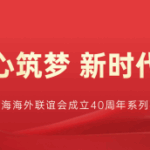The Shanghai Consumer Confidence Index for the third quarter of 2025 was released. Survey data shows that this quarter’s new confidence index stands at 91.3 points, below the 100-point equilibrium line, indicating pessimistic sentiment. Data across different age groups shows significant variations: the confidence index for the 20-39 age group is 92.0 points, slightly higher than the overall index; the 40-59 age group stands at 90.2 points, slightly lower than the overall index; while the over-60 age group reached 111.2 points, significantly higher than the overall index.
Against this backdrop, the confidence index of the elderly population stands out uniquely, and the supporting factors behind it warrant in-depth exploration. Analysis reveals that the social security system plays a crucial role. While employment evaluation indices remain low and income evaluation indices hover at bottom levels, consumer satisfaction with government social security maintains a relatively high level of 125.1, serving as an important stabilizer in people’s livelihoods. The survey indicates that over half of consumers rate social security effectiveness as “good,” with only 9.3% considering it poor, providing solid psychological assurance for the elderly population.
Beyond the support of the social security system, the consumption characteristics of the elderly population also contribute significantly to their confidence index, demonstrating resilience that differs from the contraction trend in major expenditures like housing and vehicle purchases. Although the durable goods purchase intention index of 92.6 points remains in pessimistic territory, the “timing for purchasing major household durable goods” index reaches a relatively high level of 124.7 points, showing relatively strong consumption resilience. This consumption pattern aligns with the life cycle characteristics of the elderly population, who have largely completed major expenditures like housing and vehicle purchases, making them less affected by the current real estate market downturn.
Research indicates that the rise of the silver economy is not only an inevitable outcome of demographic changes but also an important opportunity for the transformation and upgrading of the consumer market. Compared to other age groups, elderly consumption demonstrates strong stability, clear demand patterns, and emphasis on quality. Their consumption focus is shifting from basic living needs to quality-of-life improvements, providing clear development directions for related industries.
As population aging continues to deepen and wealth accumulation among the elderly population keeps increasing, the silver economy is transforming from potential demand into actual market momentum. This transformation not only helps alleviate current structural pressures in the consumer market but also provides new opportunities for business transformation and upgrading, while injecting new vitality into high-quality economic development.
The Shanghai Consumer Confidence Index for the third quarter of 2025 was jointly released. To more accurately reflect economic conditions, starting this quarter, the Shanghai Consumer Confidence Index adopts a new calculation method, named the new index to distinguish it from the original index.
Compared to the original index, the new index features two adjustments. First, while the original index comprehensively considered four dimensions – economic outlook, employment, income, and durable goods purchase intention – the new index only includes employment, income, and durable goods purchase intention. Second, the new index has optimized the weighting between the consumer evaluation index reflecting current conditions and the consumer expectation index reflecting future expectations.




